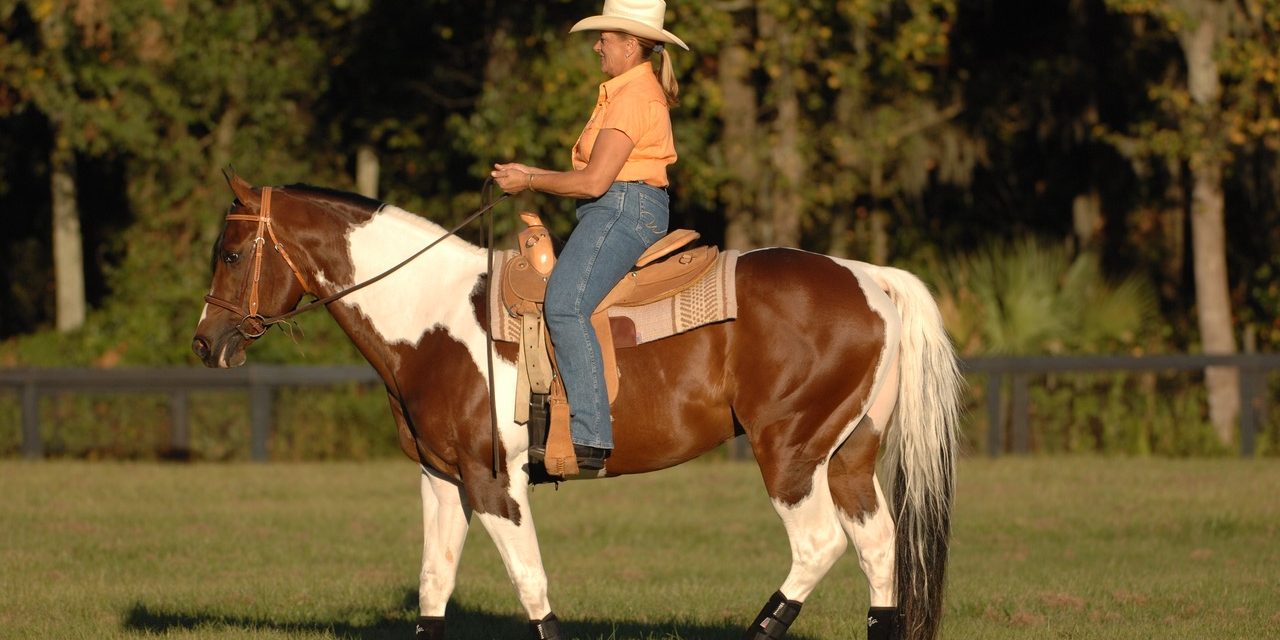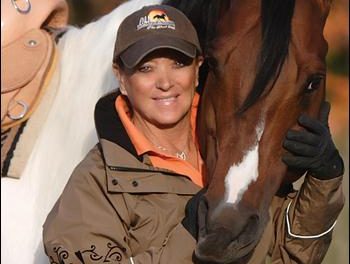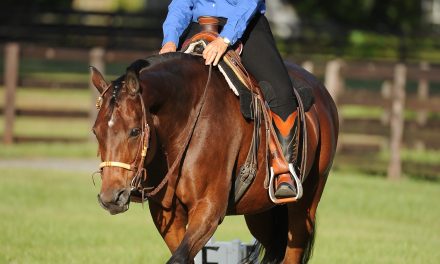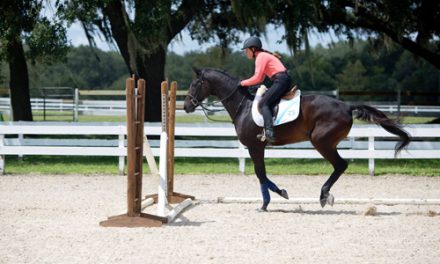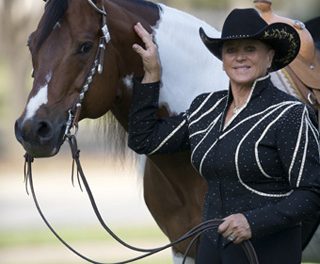Palm Partnership Training™
Building a Partnership with your Horse
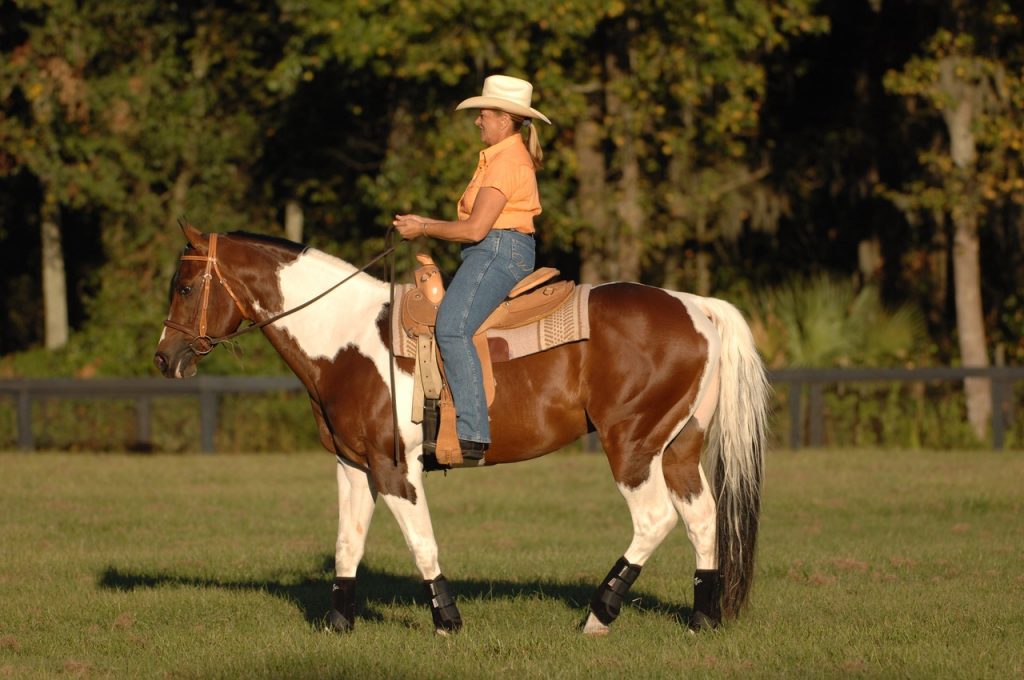
“Slowing with the Seat” is extremely important to accomplish balanced
transitions. The Seat as an aid is also necessary for collective gaits and their
transitions.
There are three aids that we use with our body to communicate with the
horse when riding:
- Seat
- Legs
- Reins
and in that order for any transitions, upward or downward.
It’s important to understand how the seat works naturally with the horse.
That action with the seat (your pelvis or hip joint) can give your horse a signal
that the leg and rein aids will come next. It also helps the horse engage the hind
leg more under his barrel, thus balancing more from the hind legs than the front.
It also gives the horse more power when the legs have a big step under him.
Weight from your seat will be the start of your downward transition, whether you
are changing gaits or changing the speed within the same gait.
How do you put more weight in your seat? Sitting down! Sit more! How do
you do this? First you must have movement in your hip joint to move forward and
back, following the motion of the walk or canter (most movement). If you don’t
feel that movement, dropping your stirrups will help elongate your legs and cause
you to sit deeper.
You must have your shoulders in perfect alignment with your hips in order
to have them unlocked and be able to move. If you want more movement of your
hip, bring your shoulders back, thus unlocking your joint and allowing it move.
When our shoulders are forward or we lean back too far, it will lock the hip
joint. When you follow the horse’s motion, you will have a more comfortable ride,
plus you will be able to use the seat as an effective aid.
We all are challenged with our upper body coming forward and in keeping
the perfect balanced alignment of our shoulders to the middle of our hips. So, tell
your shoulders to come back toward your horse’s tail. Then you will stay in
perfect alignment and can sit with more weight in the saddle. You will feel like
you are leaning back behind your hips, but I promise you won’t be! The weight in
your seat gives the horse more power to engage the hind leg.
For a downward transition, I will first sit down and stay sitting down as the
transition is happening, Second, I keep my legs touching the horse’s sides with a
very light contact to keep the hind legs moving forward. Third, I will close my
fingers on the reins to get the response I want. If I do not get the correct
response, I will do the first and second steps again, and then the third. I will open
and close my fingers, not letting my hand hold firm. This is a “give and take”
action with your fingers. If you hold your hand closed, and get no response, this
allows your horse to pull against you and resist, or to be unsteady with his head.
You may see some action in the horse’s mouth during this transition.
Ask your horse to travel on a curving line, then do your transition. A
curving line will naturally slow your horse; this helps teach your horse the seat
aid. If you don’t get a response, simply reorganize and start the transition over
again. You can’t do too many transitions in a lesson with your horse!
Here is a great exercise for slowing down with the seat. This is also great
for your “aids coordination” and the suppleness of the horse’s top line and
flexibility of the hind legs:
Use 4 sets of cones on a circle at each quarter of the circle. Have the
cones set 6 feet apart at each quarter of the circle. Place a cone in the middle, so
when you change directions, you are turning through the middle and making an
‘S’ figure. You will meet the single cone in the middle before you start the new
direction. On the circle, do a transition at each 3/4 of the circle, advance to 1/2 of
a circle, then advance to each 1/4 of the circle. Do as many upward and
downward transitions as you can so that your horse really knows how to
accomplish them.
Do not advance until you can do an upward transition and get the
downward transition at the exact 3/4 of the circle. When you start to get a lighter
response from your aids and an immediate, smooth, and willing response from
the horse, then you are ready to do them on a straight line. Use cones to do
transition between cones or simply change the distance between each set of
cones. Do the transitions first on the quarter line of the arena, then the center line
and then the diagonal line.
When you accomplish this action of the seat aid, you will always use
lighter leg and rein aids. That lighter “ask” is correct horse training! Horses love
lightness, and for me if they respond with lightness, they are understanding and
accepting the aids with confidence and athleticism.
So sit down, and move your hips more forward and back in the gait. This
stimulates and energizes the hind legs by supporting with the leg aids. Quiet your
horse with your rein aids for upward transitions.
- Palm Equestrian Academy generalinfo@lynnpalm.com 352-362-7847
- Cyril and Lynn offer clinics throughout the country and abroad as well as
online coaching. Join them on their teaching tours or their Palm Equestrian Academy
European Journeys.

